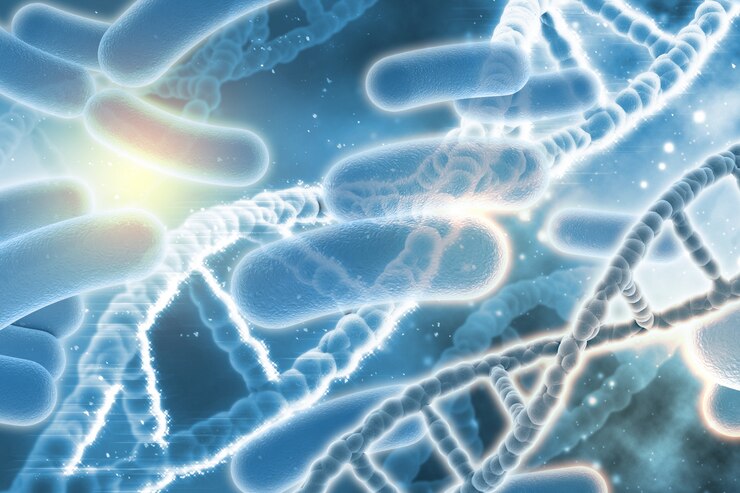Seaweeds contain a multitude of components that have been found to have beneficial effects on the mammalian gut microbiota. These effects include an increase in bacterial diversity and abundance. According to recent studies, diseases like inflammatory bowel disease, immunodeficiency, hypertension, type 2 diabetes, obesity, and cancer are often linked to imbalances in gut bacteria. The review article “Seaweed Components Potential Modulators of the Gut Microbiota” by Emer Shannon et al. provides a detailed overview of the current understanding of the therapeutic applications of seaweed-derived polysaccharides, polyphenols, and peptides in modulating the gut microbiota, drawing evidence from a range of in vitro and in vivo studies. In particular, this blog examines the potential therapeutic applications of seaweed-specific polysaccharides, with an emphasis on fucoidan.
The review focuses on seaweed polysaccharides and their effects on intestinal structure, function, and potential consequences. Prebiotics, which are one of the functions of polysaccharides, have the ability to strengthen bacterial populations. This often leads to the production of short-chain fatty acids, which serve as an important energy source for gastrointestinal epithelial cells. Additionally, prebiotics provide protection against pathogens, have an influence on immune regulation, and even inhibit apoptosis in colon cancer cells. In addition to other topics, the study also provides a detailed analysis of the oral bioaccessibility and bioavailability of fucoidan components. It further delves into the advantages and limitations of various methodologies such as static and dynamic in vitro gastrointestinal models, as well as in vivo and in vivo methods. Bioactive substances in seaweeds have shown potential for the prevention and, in some cases, treatment of human diseases.
According to previous research, it has been demonstrated that a large portion of seaweed polysaccharides consist of both water-soluble and water-insoluble fibers. The fiber content of seaweed varies across different species, with brown seaweed reported to contain between 35% and 62% fiber, red seaweed between 10% and 57% fiber, and green seaweed between 29% and 67% fiber. The main fibers of brown algae are fucoidan, laminarin, and alginate. The red colors are porphyran, carrageenan, hypnean, and fluoridene starch, ulvan, sulfated rhamnan, arabinogalactan, and green mannan.
Humans are incapable of producing the necessary endogenous enzymes to facilitate the breakdown of dietary fiber into simple sugars in the upper gastrointestinal tract. However, fiber is an excellent food substrate, or prebiotic, for human gut bacteria. Prebiotics are food components that are not digested in the small intestine, but are metabolized by microorganisms in the large intestine, where they can modulate their composition and/or activity and confer beneficial physiological effects on the host. Many species of enteric bacteria produce endogenous carbohydrate-degrading enzymes, such as β-glucanases and β-glucosidases, which can hydrolyze glycosidic bonds in polysaccharides.
There is evidence to suggest that specific types of polysaccharides present in seaweed resist digestion in the upper gastrointestinal tract. These polysaccharides have been found to possess bioactive effects, such as controlling glycemic levels and promoting the health of the gut microbiome. Additionally, they can also regulate the immune system. These effects have been observed in both in vitro and in vivo studies, indicating the potential prebiotic properties of these polysaccharides.
Fucoidan, laminarin, and alginic acid are the three polysaccharides found in wakame, each serving a distinct purpose due to their varying structures. Fucoidan accounts for 5–20% of the total seaweed thallus (DW). These are water-soluble sulfated polysaccharides composed of repeating fucose and sulfate groups and may also contain galactose, mannose, xylose, rhamnose, arabinose, glucose, acetyl groups, or glucuronic acid. The molecular weight of fucoidan ranges from 7 to 2300 kDa. The outer structure and hydrophilic coating of the cell walls, which are provided by fucoidan, serve the purpose of preventing the seaweed from drying out during low tide. Their sulfate groups can also bind to cations such as sodium, potassium, magnesium, and calcium, so they also play a role in adapting to osmotic stress caused by changes in salinity.
In previous in vitro studies, it has been observed that fucoidan exhibits the potential to be used as an anticancer, antiviral, antioxidant, and anti-inflammatory agent. When used in vivo, it serves multiple purposes, including being an anticoagulant and anticancer agent in human studies, an antitumor agent in mouse models, and an antihyperglycemic and antihyperlipidemic agent in mouse models. Recent studies conducted on fucoidan have shed light on its prebiotic status, both in vitro and in human and animal gastrointestinal studies.
To conclude, the prebiotic potential of seaweed components has been evidenced by in vitro studies and in vivo animal experiments. It is essential to recognize that these studies only offer limited insights into the actual metabolism of these components within the human body. However, as the practice of mariculture becomes more widespread worldwide, seaweed has become a sustainable source of bioactive compounds that have the potential to be used as modulators of the gut microbiome.
Source: Mar. Drugs 2021, 19(7), 358; https://doi.org/10.3390/md19070358

This is a excellent blog, would you be involved in doing an interview about just how you designed it? If so e-mail me!
A friend designed it a long time ago, so I am sorry that I am unable to answer your question.
I am sorry but I very much appreciate your comment.